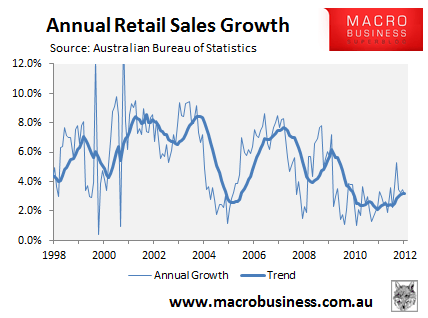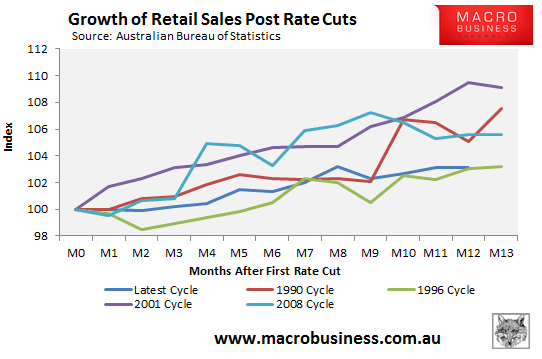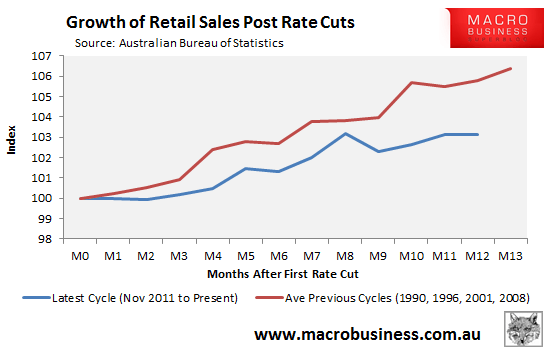
Yesterday’s disappointing retail sales data, which registered no growth in retail sales in October, undershooting the market’s expectations of 0.4% growth over the month, is further confirmation that the -1.50% cuts to official interest rates since November 2011 is failing to gain traction.
After bottoming through 2010 to 2011, retail sales have rebounded somewhat, but with sales growth at only 3.1% annually, they are barely enough to keep up with both population growth and inflation (see below chart).

This rebound in retail sales following interest rate cuts is also weak from a historical perspective. The next chart shows the growth of retail sales following the past five rate-cutting cycles, specifically those beginning in: 1990; 1996; 2001; 2008 and 2011 (the current cycle).

As you can see, retail sales growth after rates were first cut in November 2011 is on par with the 1996 cycle, but well below the 2008, 1990 and 2001 cycles.
The situation is shown more quickly in the next chart, which tracks the current cycle’s sales growth against the average of the other four rate-cutting cycles, and reveals sales growth -2.7% lower this time around at the same stage of the cycle:

With interest rate cuts failing to gain traction across a wide range of sectors – retail, housing and construction – the RBA will likely be forced to cut deeply in the year ahead in attempt to augment growth as the mining boom unwinds.
Twitter: Leith van Onselen. Leith is the Chief Economist of Macro Investor, Australia’s independent investment newsletter covering trades, stocks, property and yield. Click for a free 21 day trial.

